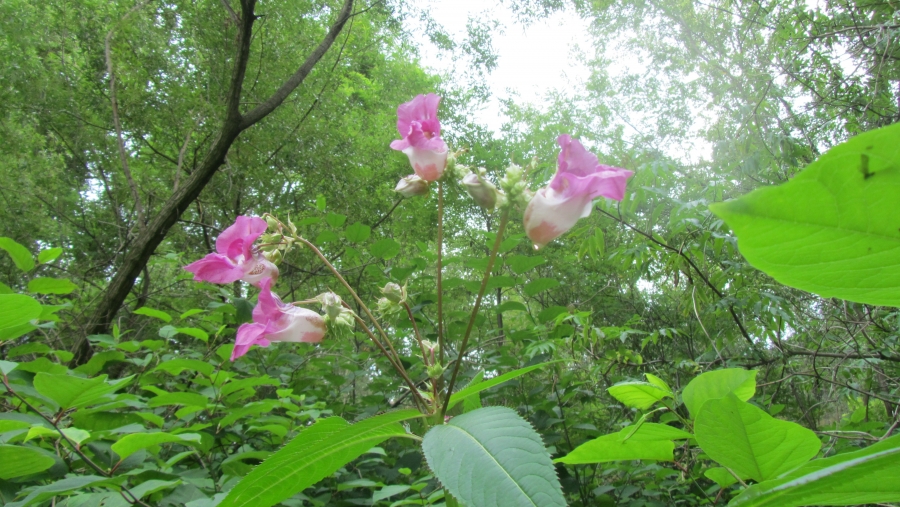Impatiens glandulifera
Description

- Also called Himalayan balsam
- Native to Himalayan region.
- Requires moist soils and grows along riparian areas, irrigation ditches, roadsides and in wetlands.
- Annual succulent herb that spreads through seed.
- Orchid-like flowers are shades of pink through purple. Blooms from July to frost.
- Roots can be white, pink or green.
- Mature seed capsules explode when disturbed and eject seeds up to 5 m away from parent plant. Produces up to 2500 seeds.
Consequences of invasion
- Increases erosion in winter due to thick patches of die-off and exposure of bare soil.
- Dominates native vegetation and diminishes conservation value.
- May decrease beneficial pollinator visits to native plants.
Status in the CKISS region
- Policeman’s helmet is classified as Contain on the CKISS Annual Priority List.
- There are widespread infestations of policeman’s helmet in the Nelson, Lower Arrow, and Creston Invasive Plant Management Areas (IPMAs) of our region. The goal is to contain the infestations in those areas, and prevent further spread into new areas.
- It has been found in a limited distribution in the remaining parts of our region, where eradication is the goal and is feasible.
- If you notice this plant growing outside of its containment areas, please report it!
- To learn more about how CKISS classifies and manages invasive species, see our Invasive Species Priority Lists page.
Integrated pest management options
- Become PlantWise! Choose non-invasive plants for your garden.
- The best time to remove Policeman’s Helmet is late June to early August, when it is in flower.
- It is best to avoid removal once seed pods are present, as they will release seeds and may increase the spread of this plant.
- Hand-pulling or digging is an effective control method, but the entire root mass must be removed.
- All pulled plants should be bagged and brought to a landfill. All landfills within the RDCK and RDKB accept invasive plant species for free. Ensure your material is bagged in clear plastic bags and notify the attendant that you have invasive plant species. Plants must be identifiable through the bag. For more information please see the RDCK Resource Recovery Bylaw.


